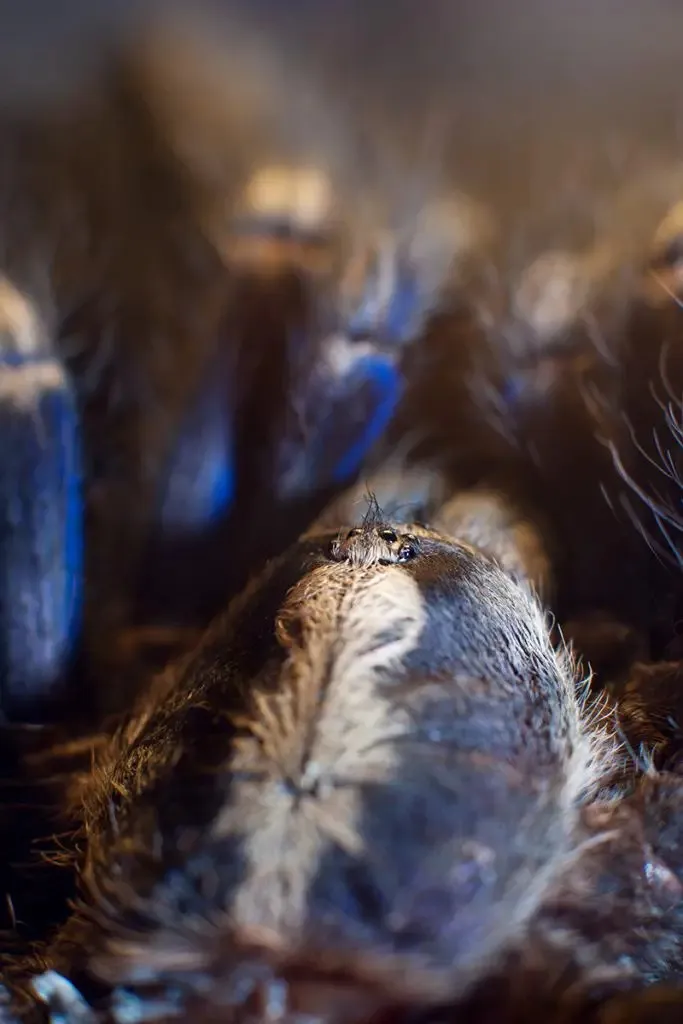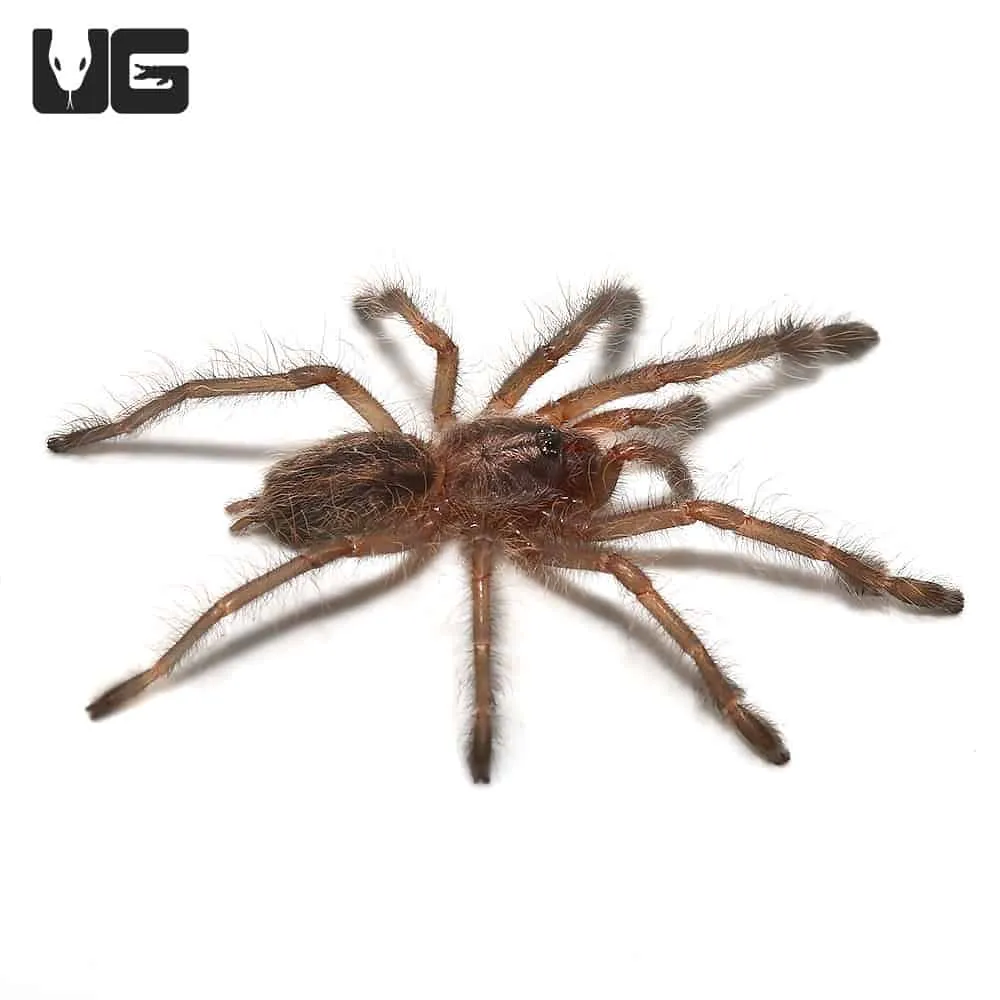What is a Gooty Sapphire Tarantula (Poecilotheria metallica)?
The Gooty Sapphire Tarantula, scientifically known as Poecilotheria metallica, is a stunning and sought-after species of tarantula. Native to a small region in Andhra Pradesh, India, these spiders are prized by enthusiasts for their striking coloration and unique arboreal lifestyle. They are a part of the Poecilotheria genus, known for their vibrant colors and the intricate patterns that adorn their bodies. These spiders are also known as the ‘Gooty’ tarantula, referring to the town near which they were initially discovered. Their beauty, combined with their fascinating behaviors, makes them a captivating subject of study and a popular pet among experienced arachnid keepers. Understanding their characteristics, habitat, and care requirements is vital for anyone considering keeping this magnificent spider.
Appearance and Characteristics
The Gooty Sapphire Tarantula is instantly recognizable due to its mesmerizing coloration. Adults exhibit a striking combination of metallic blue, yellow, and black markings. The carapace, or the upper shell of the cephalothorax, is a rich, iridescent blue, which gives the spider its common name. The legs display a pattern of black and yellow banding, and the abdomen often features a complex pattern of yellow and black stripes or chevrons. Females tend to be larger than males, with some reaching a leg span of up to 8 inches. Their overall appearance is not only beautiful but also serves as a warning to potential predators, as their bright colors indicate they are venomous. The contrast of colors and their overall size makes the Gooty Sapphire Tarantula a very impressive specimen in the world of tarantulas.
Origin and Habitat of the Gooty Sapphire Tarantula

These tarantulas are native to a very specific and limited geographical area in India. They are primarily found in the tropical dry deciduous forests of Andhra Pradesh, near the town of Gooty. Their natural habitat consists of trees, where they construct their webs and seek shelter. They are an arboreal species, meaning they spend most of their time in trees, using the height to their advantage for hunting and protection. The decline of their natural habitat, due to deforestation and human encroachment, has led to their endangered status. Conservation efforts are underway to protect their remaining habitat and prevent further population decline. They thrive in a warm and humid environment, which is a critical factor in their survival and reproduction, making the preservation of their natural environment very important.
Top 5 Amazing Facts About the Gooty Sapphire Tarantula
Incredible Sapphire Blue Coloration
The most striking feature of the Gooty Sapphire Tarantula is, without a doubt, its vibrant blue coloration. This metallic blue is not just a surface pigment; it’s the result of structural coloration. The spider’s hairs, or setae, are structured in a way that refracts light, creating the stunning blue hue. The intensity of the blue can vary depending on the individual spider, its age, and the lighting conditions. This coloration serves as a form of camouflage in their natural habitat, blending in with the dappled sunlight and shadows of the forest canopy. The combination of this blue with the other colors gives the Gooty Sapphire Tarantula a unique and alluring appearance, distinguishing it from other tarantula species.
Arboreal Lifestyle

Unlike many tarantula species that are terrestrial, the Gooty Sapphire Tarantula is arboreal, spending most of its life in trees. They build webs in the crevices of trees, under the bark, and among the branches. This elevated habitat provides them with advantages like improved hunting opportunities, protection from ground-based predators, and a more stable microclimate. They are agile climbers, well-adapted to navigating the vertical environment. They are nocturnal hunters, waiting patiently in their webs for unsuspecting prey to wander by. This arboreal adaptation is a significant aspect of their behavior, setting them apart from many other tarantula species, and makes them a fascinating subject for observation and study.
Venom and Potency
Gooty Sapphire Tarantulas, like all tarantulas, possess venom, which they use to subdue their prey. While their venom is not considered lethal to humans, their bite can be painful and can cause localized symptoms such as muscle cramps, redness, and swelling. The potency of their venom is relatively high compared to some other tarantula species, due to the nature of their hunting style and environment. It is important to exercise caution when handling them and to avoid provoking them. The severity of a bite can vary depending on the individual, the amount of venom injected, and the spider’s size. Always seek medical attention if you are bitten, especially if you experience severe symptoms. Responsible handling and understanding their defense mechanisms are essential.
Conservation Status
The Gooty Sapphire Tarantula is considered critically endangered in its natural habitat. Deforestation, habitat loss, and the illegal pet trade have severely impacted their population. Due to their rarity and beauty, they are highly sought after by collectors, which further threatens their survival. Conservation efforts, including habitat preservation and captive breeding programs, are crucial to protecting this species. Organizations are working to educate the public about their endangered status and promote responsible pet ownership. International trade regulations and careful monitoring are vital to ensure the survival of the Gooty Sapphire Tarantula. The future of this magnificent spider depends on ongoing conservation efforts and the global community’s commitment to its protection.
Lifespan

The lifespan of a Gooty Sapphire Tarantula can be relatively long, especially for females. Females can live for up to 12 years or even longer under optimal conditions. Males, however, have a much shorter lifespan, typically only living for a few years after reaching maturity. Factors such as diet, habitat, and overall care significantly influence their lifespan. Captive-bred tarantulas, when properly cared for, often live longer than those in the wild, where they face various environmental challenges and predators. Understanding their life cycle and providing the appropriate care is essential for maximizing their lifespan and ensuring their overall health and well-being. Their longevity makes them a long-term commitment for those who choose to keep them as pets.
Caring for a Gooty Sapphire Tarantula
Creating the Perfect Habitat
Creating a suitable habitat is crucial for the well-being of a Gooty Sapphire Tarantula. A tall terrarium is essential, as they are arboreal. The enclosure should be at least three times the spider’s leg span in height, with sufficient width and depth. The substrate should consist of a mixture of peat moss, coconut fiber, and a bit of vermiculite, to retain humidity. Provide ample vertical climbing opportunities, such as cork bark, branches, and artificial plants. Maintaining a temperature between 75-85°F (24-29°C) and a humidity level of 70-80% is critical. Regular misting and adequate ventilation are necessary to maintain the ideal environmental conditions. The enclosure should be secured with a tight-fitting lid to prevent escape. Proper setup will encourage their natural behavior and ensure their health and well-being.
Feeding and Diet

Gooty Sapphire Tarantulas are carnivorous and primarily feed on insects. A varied diet is essential for their health and growth. Suitable food items include crickets, roaches, mealworms, and occasionally, small moths. The frequency of feeding depends on the spider’s age and size; younger spiders should be fed more frequently than adults. Generally, feed juveniles 2-3 times a week, and adults once a week or every other week. Remove any uneaten prey within 24 hours to prevent stress and contamination. Providing a shallow water dish with fresh water is also important for hydration. Avoid feeding wild-caught insects, as they may carry parasites or pesticides. Ensure your tarantula has a balanced diet and access to fresh water for its optimal health.
Handling and Safety
While Gooty Sapphire Tarantulas are beautiful, they should be handled with extreme caution and only by experienced keepers. They are fast, skittish, and can deliver a painful bite if they feel threatened. Avoid handling them unless absolutely necessary, such as for cleaning the enclosure or health inspections. If handling is unavoidable, do so in a controlled environment, close to the ground, and with extreme care. Always use a soft brush to gently coax the spider into a container if you need to move it. Never underestimate the speed and agility of these spiders. Be prepared to deal with the spider’s defensive behaviors, such as raising its front legs, striking a threat posture, and potentially biting. Always wash your hands thoroughly before and after handling, and be mindful of their potentially potent venom.
Conclusion
The Gooty Sapphire Tarantula is a truly remarkable species, captivating enthusiasts with its stunning appearance and fascinating behaviors. From its vibrant blue coloration to its arboreal lifestyle, this tarantula is a unique addition to any experienced keeper’s collection. However, it’s critical to understand the responsibility that comes with owning such a delicate and endangered species. By providing the proper habitat, diet, and handling precautions, it is possible to enjoy these amazing creatures responsibly. Remember that conservation efforts are vital to ensuring the survival of the Gooty Sapphire Tarantula in its natural habitat. With dedication and knowledge, these magnificent spiders can be appreciated for many years to come.
